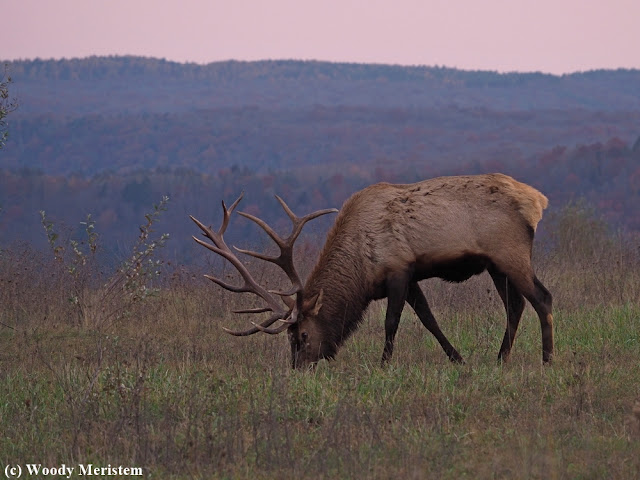For many years I’d looked up the hillside, far above the road I subsequently traveled almost daily for several years. There, far above, was a rock outcrop that looked suspiciously like an old quarry. It was quite a way above what was a much larger quarry which was itself far above the road. I looked and looked, day after day, and finally had the time and inclination to make the climb.
So I found a place where I could park off the traveled portion of the road (barely off, but the road wasn’t traveled much), and looked at the cut-bank left by road widening many years ago, up I went, an adventure in itself. Above the bank was a faint, very steep old road, partially blocked by fallen trees, heading uphill toward the large quarry.
Up the old road I went, up and up to the large quarry. Sure enough it was an old flagstone quarry to produce material for the sidewalks of rapidly growing cities, probably opened in the late-1800s or early-1900’s and abandoned a couple of decades later. But this still didn’t get me to the upper outcrop (quarry).
So I circled above the quarry and found a faint track leading steeply upward, up I went and walked into a yet older, smaller quarry. There, laying on a slab of flagstone, among the dead leaves and twigs and moss, were a number of hand-forged quarryman’s chisels –
When were they left there and why did a worker leave them? Was the man who used these chisels injured on the job? Did he sicken and die as a result of the infections or diseases so common before modern medicine? Did he find a better-paying, less laborious way to earn a living and bid his chisels good-riddance? We’ll never know.
I brought a couple of the chisels back, and left the rest in place. If I could ever get to that quarry again, an increasingly unlikely accomplishment, I’d return the chisels, otherwise the ones I brought back will wind up at the local museum. The rest may never be seen by a human again since it’s doubtful if anyone ever climbs that lonely road – or even know it exists. Gradually the road’s being restored by time and nature – the chisels will soon be covered by fallen leaves and moss.
Another day and on another lonely hillside our son and I came upon a spring seep that had been the water supply for a long abandoned logging camp. Leaning against an ancient sugar maple was the blade of a two-man crosscut saw. We pushed aside some of the fallen leaves and duff that had developed from decades of decaying leaves and found what had been the camp dump – a few broken bottles, the fragile remains of rusted steel cans, the head of a maul used to split firewood for the camp’s stoves and a few rusted and broken parts of one of those stoves.
The camp was near the grade of a long-ago logging railroad; from an old map it seems that the area was logged in 1916 when the hemlock was cut and peeled and it’s bark transported to a tannery. Contrary to popular belief, those hemlock logs were not left to rot. Bark could only be peeled in late-spring/early-summer, the logs were later shipped to a sawmill and made into lumber (see this post).
Our son took the splitting maul, which he still uses almost 30 years later to split wood to fuel the stove that heats their house. He says it’s the best splitting maul that he’s ever used – a big thank you to the long-ago blacksmith that made it.
His father took a piece of the broken stove – it’s embossed “Grand Times” –
Life in a 1916 logging camp would have been anything but grand although, if it was like most logging camps, the food would have been abundant and good. But the loggers would probably have slept two to a bed, sharing lice and flatulence, rising early and working harder than anyone does in the 21st century.
The
anonymous loggers who lived and labored there are long gone. Although
an occasional hunter may
walk the old railroad grade, it’s doubtful if anyone drops over the
steep hillside to stumble upon the site of the logging camp.
How much more unknown history involving nameless and forgotten people remains in the woods around us?
Happy Holidays to each and every one -- see you in the New Year


.jpg)

-DeNoiseAI-standard.JPG)
-DeNoiseAI-standard.JPG)
-DeNoiseAI-standard.JPG)
-DeNoiseAI-standard.JPG)
-DeNoiseAI-low-light.JPG)
-DeNoiseAI-standard-DeNoiseAI-standard.JPG)
.jpg)

.jpg)


.JPG)
.jpg)
.JPG)
.jpg)
.jpg)
.JPG)
.JPG)
.jpg)
.JPG)
%20-%20poult.jpg)
.JPG)
.JPG)
.JPG)
.JPG)



.JPG)
-DeNoiseAI-low-light.JPG)
-DeNoiseAI-low-light.JPG)
.JPG)
.JPG)
.JPG)
.JPG)
.jpg)
.jpg)

-DeNoiseAI-low-light.JPG)
.JPG)
.JPG)
.JPG)

.JPG)
.JPG)
.JPG)
.JPG)
-DeNoiseAI-low-light.JPG)

.JPG)
.JPG)
.JPG)
%20Z%20(774).JPG)